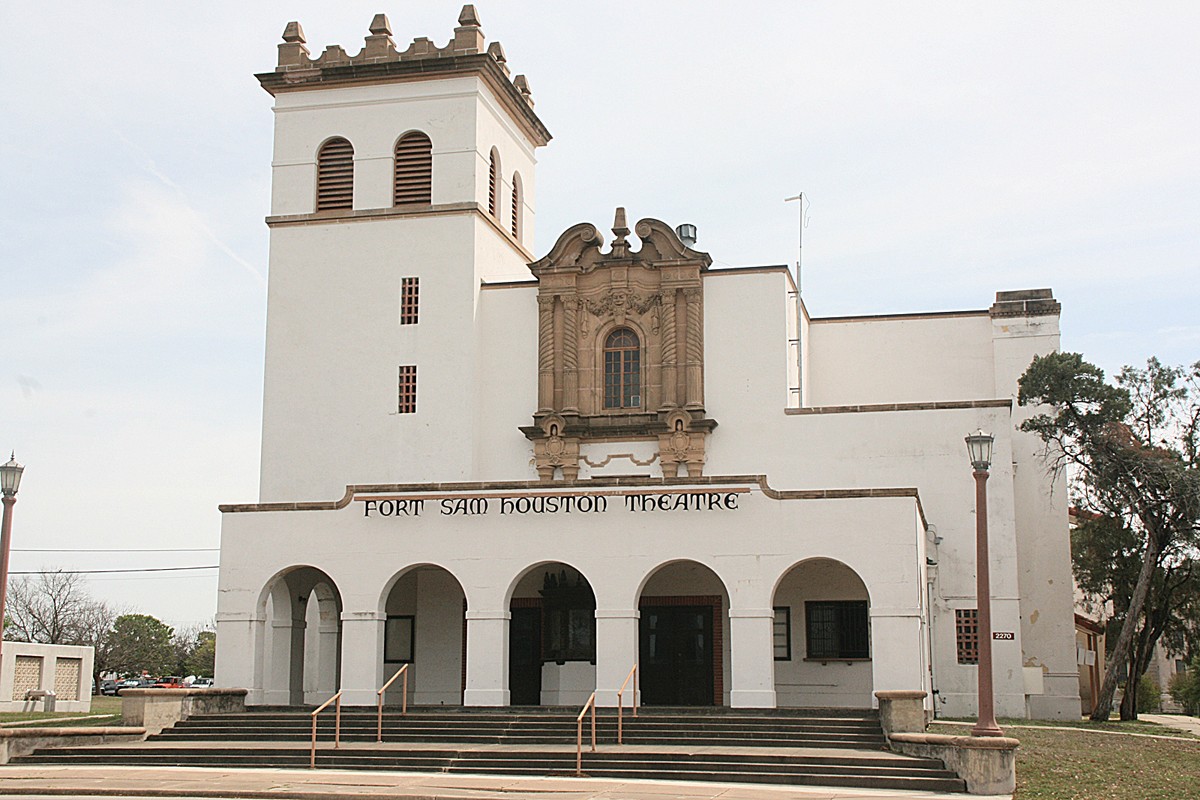(FORT SAM HOUSTON, Texas) - Some of the oldest structures in the U.S. Army's inventory are gaining new life and uses under the Base Realignment and Closure construction and renovation program on Fort Sam Houston.
Construction of the post began in 1876, and Fort Sam Houston has more historic structures than any active military installation in the United States.
Today, several of these 800 buildings are part of a massive transformation of the post to accommodate the arrival of thousands of military personnel, federal employees, and new missions required by the 2005 BRAC law.
The restoration of historic structures on Fort Sam Houston will provide administrative space primarily for about 3,000 military personnel and civilian employees who support a variety of realigned agencies and commands. The Installation Management Command, including its headquarters IMCOM-West, Family and Morale, Welfare and Recreation Command, and Army Environmental Command; Mission and Installation Contracting Command; and Network Enterprise Technology Command, including the 106th Signal Brigade. New facilities built through other BRAC projects are expected to bring an additional 9,000 individuals to Fort Sam Houston.
Attention to Detail
These renovation projects include about two dozen structures, many of which are more than 75 years old and several that are more than a century old. As federal historic renovation efforts, the projects are proceeding within the parameters of the National Historic Preservation Act.
A special Army Alternate Procedures agreement is also in place that outlines more specific management practices to ensure that the visual character of the buildings is maintained. Under this agreement, project teams consult regularly with the Advisory Council on Historic Preservation and the Texas Historical Commission.
"Renovation projects like these require extraordinary effort because intricate architectural features must be preserved to achieve an appearance that is true to the original designs," said David Thomas, director of the Joint Program Management Office, which is overseeing the San Antonio BRAC construction and renovation program. "Extra care and diligence are also necessary in carrying out the work because of the delicate state of some of these buildings."
All of the historic structures require extensive rehabilitation to become suitable for their new tenants. In most cases, existing interior partitions, electrical wiring, plumbing, climate control systems and interior and exterior lighting fixtures need to be replaced. Stairways, ceilings, wooden floors, structural roof members, interior and exterior doors and windows are also being repaired, refinished or replaced.
The Past Re-visited
The Building 600 area represents the oldest group of buildings on Fort Sam Houston. Between 1885 and 1889, Buildings 603 through 609 were constructed as officers' quarters and barracks. These structures, which are known as the "Long Barracks," are attached by common two-story walls and have masonry exteriors and wooden floors.
Building 613 is a three-story structure that is located in the middle of the Building 600 area and sits above a sally port. It was constructed in 1887 as a regimental headquarters and has masonry exterior walls and wooden floors. Building 615 was built nearby in 1891 as a consolidated dining hall, post exchange, and gymnasium. It includes two stories with a basement and an attic, and is made of limestone walls supported by wood and masonry columns.
Buildings 603 through 609 and Building 613 will be turned into office space. These projects are currently scheduled to be finished in late 2010. Work on Building 615 concluded in the fall of 2008. It has been converted into a band facility with music rooms and assembly areas.
Building 2000 was built in 1908 to serve as the installation's new hospital, replacing the hospital that had been constructed in 1886. The building is a three-story wood and masonry structure with a basement and an attic. It has limestone exterior walls, wooden and masonry columns, wraparound wooden verandas on the first and second floors, and a wood-framed roof structure. In 1910, two wings were added to the east and west giving the building its current "U" shape.
Buildings 2001 and 2007 were built in 1917 adjacent to the Building 2000 hospital. Building 2001 served as a hospital annex and 2007 functioned as a hospital ward. They both share many of Building 2000's design features and structural materials. Both Buildings 2000 and 2001 are scheduled to be ready for occupancy this year. Renovations to Building 2007 were completed last fall.
Buildings 145, 146, 147 and 149 originally functioned as barracks when they were completed in 1908. All of the buildings are two-story, brick masonry buildings with basements. They also have exterior porches on the first and second floors that extend across the length of the buildings, along with wooden floors and wooden interior stairs.
Three of the buildings are scheduled to receive tenants in the summer of 2010, while the fourth is scheduled to be finished in the summer of 2011.
Buildings 2263 through 2266 are three-story structures that were constructed as an infantry regimental headquarters and an infantry battalion barracks between 1928 and 1929. Building 2270 opened as a movie theater in 1935. All of these renovation projects are slated for completion by the spring of 2011.
Building 1001 is among a cluster of medically related buildings that were built in the Spanish Colonial Revival style. San Antonio architect Atlee B. Ayers had organized a successful local campaign prior to World War II to incorporate Spanish-influenced architectural features into new buildings constructed on Fort Sam Houston.
Building 1001 was completed in 1936 and served as nurses' quarters. It is next to the original Brooke Army Medical Center, which was built in the same style. Restoration of Building 1001 is expected to be finished by the end of 2011.


Social Sharing